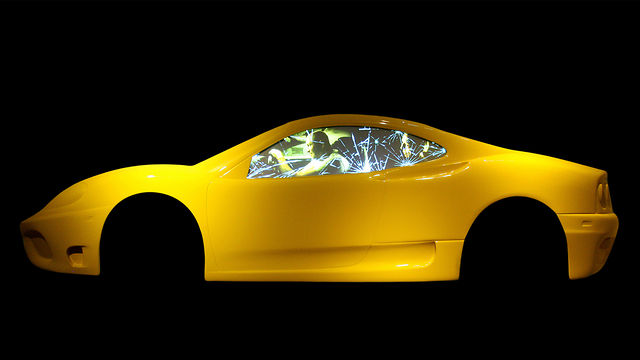
Peter Sarkisian, The After-School Special
Peter Sarkisian grew up in Cerillos, New Mexico in the early seventies on what sounds like a hippie commune. His family used an outhouse that was possibly shared between multiple families. He may or may not have gone to conventional school and maybe sometimes watched one of the three channels on his parents’ Zenith T.V.—during his off time from having seminal experiences in the country. He definitely watched the moon landing and somehow all this influenced him in his quest to become a video artist.
Extraordinarily personable, Sarkisian began his lecture last Tuesday night at Santa Fe University of Art and Design with this glimpse of personal narrative. He put the audience at ease, stressing that we could interrupt at any time instead of waiting for the Q & A and I trusted him when he said he’d try to finish in an hour. (Two hours later, I walked out of Tipton Hall.)
He spent most of that time exploring the opening question of his art practice, developed during those formative years cavorting in Cerillos and later with Santa Fe locals. Sarkisian asks something very basic: how is art, specifically video art, different from home entertainment? A CalArts film major, Sarkisian compares home entertainment’s traditional narrative to folding laundry. We’ve been “folding the same stories” forever and Sarkisian wants to subvert the plot. The difference between art and home entertainment, Sarkisian surmised, is similar to the difference between buying paint from Home Depot and a painter—it’s the intent that changes things, and more importantly how that intent alters the viewer’s experience.
Sarkisian wants his viewer to have an experience and this brings up another Sarkisian’ dyad: information and experience. While T.V. is a “robust source of information,” it is “experientially void.” We watch television, gaining information through an illusory model of experience. Very different from country life in Cerillos, the learned information from T.V. becomes useless when taken into the real world. If Ren & Stimpy have a shoot-out using each other’s heads, consequences do not exist. Here is the pendulum on which Sarkisian’s work rests. Evoking an after-school special, this do-gooder cares about the collective narrative and finds ways to uproot the plot by bringing people’s actions into real time.

In Registered Driver, 2010 (see feature image) Sarkisian transforms virtual reality into a Lichtenstein-esque visual experience. Severely pushing the limits of his racecar video game by driving in wrong lanes, crashing, spinning out and any other operable misdeeds, Sarkisian filmed this experience and planted the footage inside the driver’s window of a larger-than-life molded fiberglass yellow Ferrari. Placed over this motor vehicle debacle is footage of Sarkisian driving. He is nonchalant, chilled out and completely unbothered by any of his misdeeds. Consequences incurred by his poor driving are none of his concern. Mirroring the experience of the gamer, Sarkisian displaces this social neglect by placing it in a gallery, in the space of his viewer.
Like a family sitcom, Sarkisian’s video art repeatedly offers a moral behind the story. Often humorous and never forced, his work is brightly colored with that squeaky clean super-marketable look that feels very accessible, like him.
